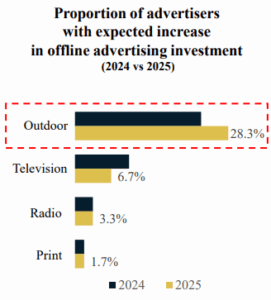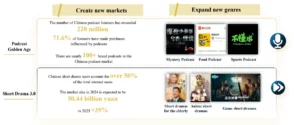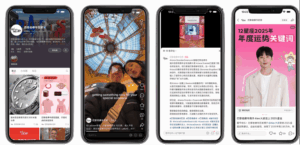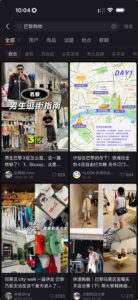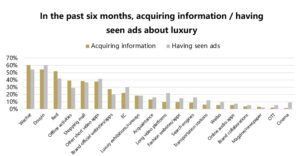As Xiaohongshu (also known as RED or RedNote) rides a global wave of attention, savvy marketers in Southeast Asia are beginning to take notice—especially in Malaysia and Singapore, where Chinese-speaking communities and Gen Z digital behavior have laid fertile ground for RED’s rise.
The 2025 migration of TikTok users—dubbed “TikTok refugees”—has fueled fresh interest in the platform, helping RED gain traction across international markets. But in Malaysia and Singapore specifically, this interest is translating into 4.3 million users and growing daily.

So, what’s driving Xiaohongshu’s success in the region—and how can brands seize this opportunity?
Why RED Is Gaining Traction in Southeast Asia
Unlike other social platforms where aesthetics and advertising dominate, RED has carved a niche with authentic, UGC-driven long-form content. Its recommendation engine favors user-generated reviews, everyday tips, and real-life experiences over polished brand pushes—making it feel more like a trusted community than a billboard.
What sets RED apart:
- UGC algorithm that prioritizes authenticity
- Interest-based communities for like-minded users
- Less polished, “real” content that resonates with young urban audiences
In both Malaysia and Singapore, this approach aligns well with user preferences for credibility, relatability, and peer-driven inspiration.
Who’s Using RED in Malaysia and Singapore?
📍 Malaysia
- User Growth: 4% YoY
- Demographics: 63% aged 16–34, predominantly Chinese and single
- Traits: Brand lovers, fame followers, private networkers
- Behavior: Follow trends, stay anonymous, seek genuine product insights
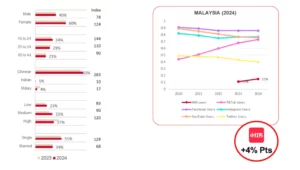
📍 Singapore
- User Growth: 13% YoY
- Demographics: 42% aged 16–34, 36% aged 35–54; majority Chinese with growing Malay users
- Traits: Affluent shoppers, community participants, brand enthusiasts
- Behavior: Value exclusivity, seek peer recommendations, lean into lifestyle
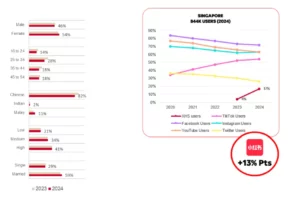
Despite being smaller than platforms like Instagram or TikTok, RED boasts high “daily stickiness”—meaning users return frequently, stay longer, and engage deeper.
Top Categories Thriving on RED
If your brand plays in any of the following categories, you should already be testing on RED:
High-performing categories:
- Beauty & personal care
- Fashion
- Travel & tech
Surprisingly strong categories:
- Indulgence items: Snacks, ice cream, alcohol
- Experiential offers: Spa packages, concert tickets, weekend getaways
These segments see outsized engagement on RED thanks to its word-of-mouth ecosystem, where users don’t just browse—they search, share, and buy.
Why Some Brands Still Hesitate
Despite its growing popularity, some brands remain hesitant about RED. Two main challenges arise:
1. Language barrier
The app is still heavily Chinese-dominated, which may alienate non-Chinese speakers, especially in Malaysia.
2. Smaller user base
While RED has 4.3M users in Malaysia and Singapore, it’s still modest compared to larger platforms.
However, with double-digit daily stickiness and deeply engaged niche communities, RED may offer better ROI per user—especially for categories that benefit from peer-driven recommendations.
How Brands Can Win on RED: The 5C Framework
To help brands approach RED with the right mindset, here’s a 5C framework tailored for Southeast Asia:
1. Channel Fit
Is RED the right platform to achieve your goals? RED works best for community-led discovery and product consideration, not mass awareness.
2. Credibility First
RED thrives on peer-to-peer validation. Partner with KOCs (Key Opinion Consumers) instead of high-profile influencers. Their relatable content earns more trust.
3. Content Realness
Avoid polished, overly branded visuals. Go for raw, everyday content that feels natural. Think product reviews, behind-the-scenes, and day-in-the-life storytelling.
4. Community Engagement
Create or join niche communities. Use hashtags, UGC contests, and local incentives to fuel participation and build brand tribes.
5. Commerce Integration
Link content to your brand store or landing pages. RED users are highly conversion-driven and expect direct access to purchase options.
Best Practices for Getting Started
Here’s how to integrate RED into your broader social media strategy:
1. Audit your audience-fit
Is your target audience already searching for your category on RED?
2. Localize the content
Test campaigns specifically for Chinese-speaking segments or Malays in Singapore, where user bases are growing.
3. Build a RED-specific strategy
Don’t just cross-post. Develop unique campaigns with tailored UGC, hashtags, and influencer partnerships.
4. Focus on organic first
RED isn’t a place for hard-selling. Earn trust through authentic storytelling and then guide users to purchase.
5. Drive to brand space
Ensure your RED content links to your brand page or store to capture interest and complete the journey.
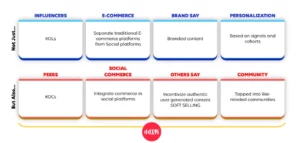
Final Thoughts
Xiaohongshu’s growth in Malaysia and Singapore is a signal that consumer discovery behavior is changing. As trust, community, and authenticity become key drivers of influence, RED offers a powerful complement to your mainstream platforms.
With 4.3 million engaged users and growing stickiness, RED isn’t just a trend—it’s a rising social commerce channel that can give early movers a lasting competitive edge.
Looking to build your RED strategy for Southeast Asia? Our team can help with KOC outreach, community content, and localized campaigns tailored to RED’s ecosystem. Let’s talk.









